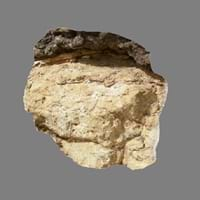Definition
Skarns are formed during regional or contact metamorphism and from a variety of metasomatic processes involving fluids of magmatic, metamorphic, and/or marine origin
Laterite rock is a type of Sedimentary rock which is rich in iron and aluminium, formed in hot and wet tropical areas
Origin
USA, Australia
India
Discoverer
Tornebohm
Francis Buchanan-Hamilton
Etymology
From an old Swedish mining term originally used to describe a type of silicate gangue or waste rock.
From Latin later brick, tile + -ite1
Class
Metamorphic Rocks
Sedimentary Rocks
Sub-Class
Durable Rock, Hard Rock
Durable Rock, Soft Rock
Group
Not Applicable
Not Applicable
Other Categories
Fine Grained Rock, Opaque Rock
Fine Grained Rock, Opaque Rock
Texture
Earthy, Mud-rich, Rough
Earthy, Massive, Porphyritic
Color
Black, Brown, Colourless, Green, Grey, White
Brown, Buff, Red
Durability
Durable
Durable
Appearance
Dull
Rough and Banded
Interior Uses
Decorative Aggregates, Entryways, Interior Decoration
Decorative Aggregates, Flooring, Interior Decoration
Exterior Uses
As Building Stone, As Facing Stone, Garden Decoration, Paving Stone
As Building Stone, As Facing Stone, Garden Decoration
Other Architectural Uses
Curbing
Curbing
Construction Industry
As a Flux in the Production of Steel and Pig Iron, As a Sintering Agent in Steel Industry to process Iron Ore, As Dimension Stone, Gold and Silver production, Manufacture of Magnesium and Dolomite Refractories
Cobblestones, for Road Aggregate, Landscaping, Roadstone
Medical Industry
Not Applicable
Not Yet Used
Antiquity Uses
Artifacts, Monuments, Sculpture
Artifacts, Monuments, Sculpture
Commercial Uses
Creating Artwork, Gemstone, Jewelry, Metallurgical Flux, Source of Magnesia (MgO)
An Oil and Gas Reservoir, Source of bauxite, Used in aquariums
Types
Endoskarns
Not Available
Features
Host Rock for Lead, Zinc and Copper Deposits
Is one of the oldest rock, Very fine grained rock
Archaeological Significance
Famous Monuments
Data Not Available
Data Not Available
Famous Sculptures
Data Not Available
Data Not Available
Pictographs
Not Used
Used
Petroglyphs
Not Used
Used
Formation
Due to change in environmental conditions, rocks are heated and pressurized deep inside the Earth's surface. Skarn is formed from the extreme heat caused by magma or by the intense collisions and friction of tectonic plates.
Laterite is a type of sedimentary rock which is generally a reddish weathering product of basalt.
Mineral Content
Calcite, Enstatite, Epidote, Garnet, Magnetite, Pyroxene, Titanite
Aluminum Oxides, Biotite, Hematite, Hornblade, Iron Oxides, Manganese Oxides, Micas, Muscovite or Illite, Plagioclase, Pyroxene
Compound Content
Au, CaO, Carbon Dioxide, Cu, Fe, MgO
Aluminium Oxide, CaO, Iron(III) Oxide, FeO, Potassium Oxide, MgO, MnO, Sodium Oxide, Phosphorus Pentoxide, Silicon Dioxide, Titanium Dioxide
Types of Metamorphism
Burial Metamorphism, Cataclastic Metamorphism, Contact Metamorphism, Hydrothermal Metamorphism, Impact Metamorphism, Regional Metamorphism
Not Applicable
Types of Weathering
Not Applicable
Biological Weathering, Chemical Weathering
Types of Erosion
Not Applicable
Chemical Erosion, Water Erosion, Wind Erosion
Grain Size
Fine Grained
Fine Grained
Fracture
Irregular
Conchoidal
Streak
Light to dark brown
White
Porosity
Less Porous
Highly Porous
Luster
Waxy and Dull
Dull
Cleavage
Slaty
Not Applicable
Toughness
2.4
Not Available
Specific Gravity
2.86
Not Available
Transparency
Opaque
Opaque
Density
2.8-2.9 g/cm3
Not Available
Specific Heat Capacity
Not Available
Resistance
Heat Resistant
Heat Resistant, Pressure Resistant
Deposits in Eastern Continents
Asia
China, India, Russia, Saudi Arabia, South Korea, Sri Lanka
India
Africa
South Africa, Western Africa
East Africa, Western Africa
Europe
United Kingdom
England, Romania, Scotland
Others
Not Yet Found
Not Yet Found
Deposits in Western Continents
North America
Canada
Canada, USA
South America
Brazil, Colombia, Paraguay
Not Yet Found
Deposits in Oceania Continent
Australia
Central Australia, Western Australia
Central Australia, Western Australia
All about Skarn and Laterite Properties
Know all about Skarn and Laterite properties here. All properties of rocks are important as they define the type of rock and its application. Skarn belongs to Metamorphic Rocks while Laterite belongs to Sedimentary Rocks.Texture of Skarn is Earthy, Mud-rich, Rough whereas that of Laterite is Earthy, Massive, Porphyritic. Skarn appears Dull and Laterite appears Rough and Banded. The luster of Skarn is waxy and dull while that of Laterite is dull. Skarn is available in black, brown, colourless, green, grey, white colors whereas Laterite is available in brown, buff, red colors. The commercial uses of Skarn are creating artwork, gemstone, jewelry, metallurgical flux, source of magnesia (mgo) and that of Laterite are an oil and gas reservoir, source of bauxite, used in aquariums.










